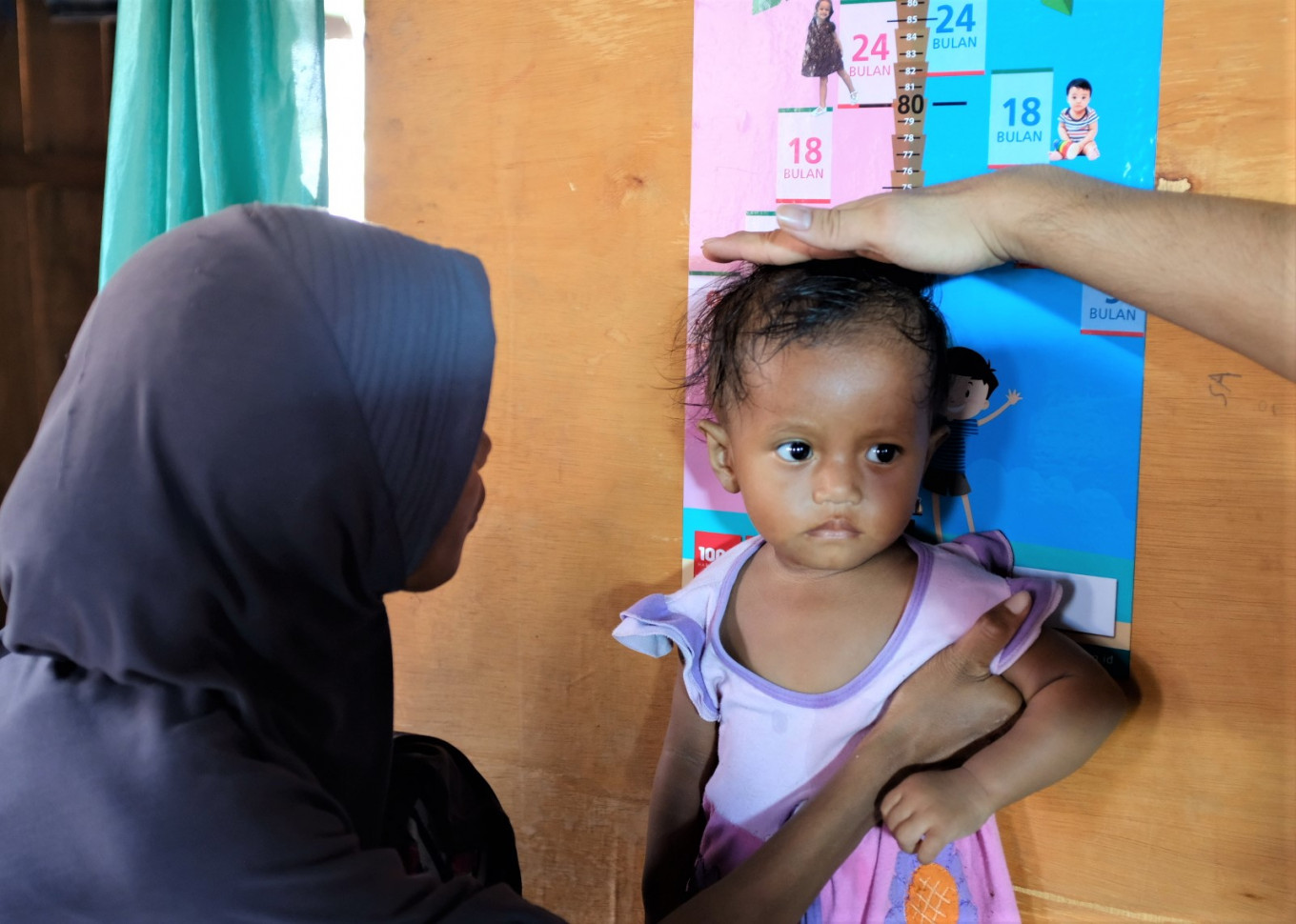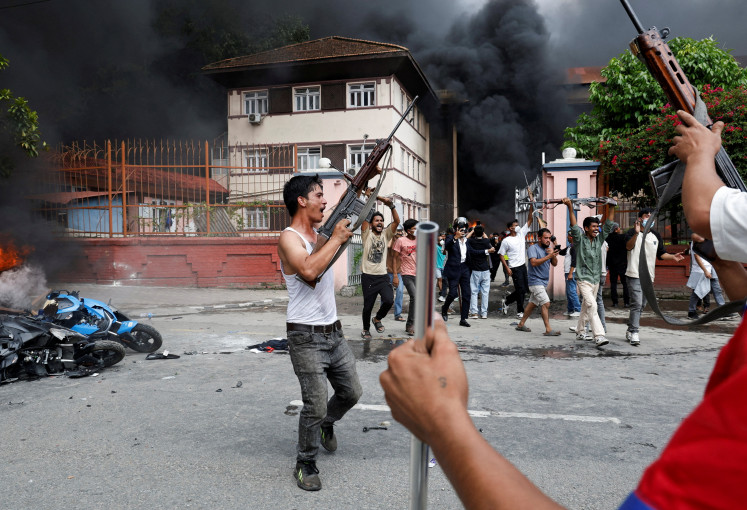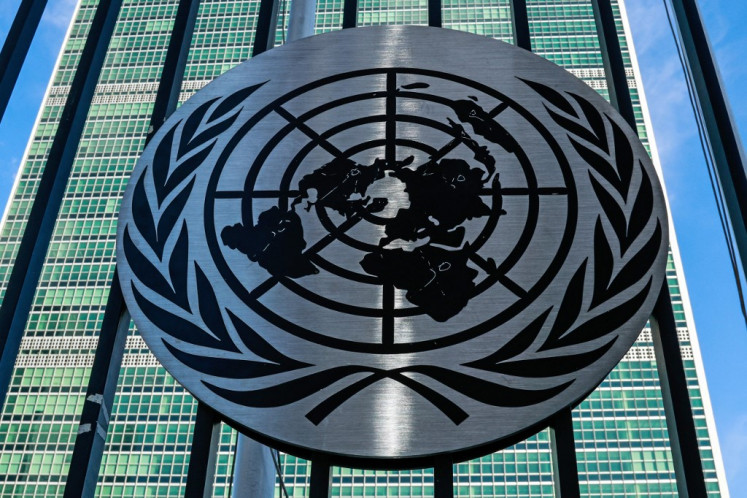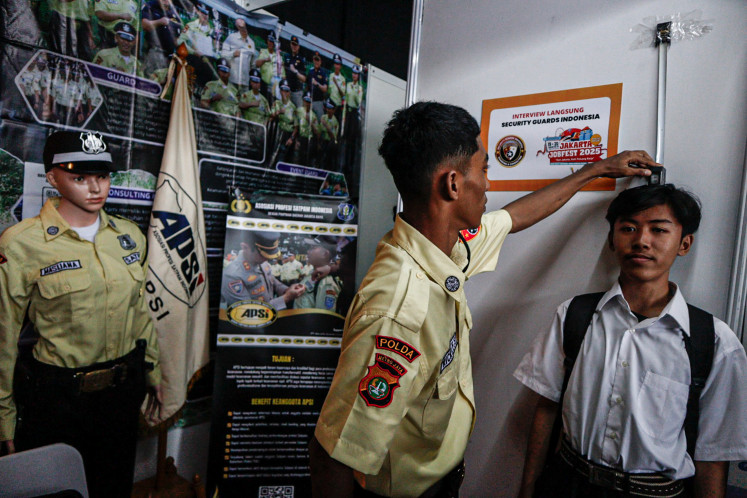Popular Reads
Top Results
Can't find what you're looking for?
View all search resultsPopular Reads
Top Results
Can't find what you're looking for?
View all search results‘Pak’ Jokowi, please visit stunting prevention programs in NTT
In parts of eastern Indonesia—islands like Komodo, Rinca and Timor—the stunting rate is a staggering 43 percent.
Change text size
Gift Premium Articles
to Anyone
B
y the time you have finished reading this letter five Indonesian children will be born to a life devastated by stunting. The 1000 Days Fund fights this catastrophe daily in the most neglected parts of Indonesia—testing and developing simple tools that have been shown to reduce stunting and chronic malnutrition by more than 20 percent.
It is our sincere honor to offer President Joko “Jokowi” Widodo an open invitation to visit Indonesia’s first Impact Stunting Center of Excellence (ISCE), located in Labuan Bajo, East Nusa Tenggara (NTT). In just nine months the ISCE has trained more than 500 community health workers and impacted the lives of more than 10,000 mothers and children under 2.
Inspired by a Gates-funded study out of Zambia, which showed that having growth charts on the walls of homes with children under 5 led to a 22 percent decline amongst already stunted kids, we set out to find a cost-effective and scalable solution to Indonesia's staggering stunting problem.
Armed with a tiny grant from the World Bank, we designed a pilot to test smart charts across three islands inside Komodo National Park. Our initial pilot had a sample size of 159 households and we learned that 65% of moms were making better decisions regarding the livelihood of their children under 2 because of the charts. More importantly, we saw a rise in exclusive breastfeeding and more confident informal community health workers.
We believe the program, built alongside local government officials and now scaled to over 100 subdistricts throughout NTT, would give the President the benefit of seeing real service delivery and impact, benefiting some of the country’s most vulnerable citizens.
Stunting, or low height for age, is caused by insufficient nutrient intake, poor hygiene and frequent infections, and is associated with terrible disadvantages, including a loss of up to 10 IQ points. Stunted children also have weakened immune systems which means they are more susceptible to illnesses like diarrhea, and miss school more often than their non-stunted peers.
So what can be done to reverse stunting? Simply put, almost nothing. Much of the damage incurred during the first 1,000 days of life is irreversible.
This is Indonesia's silent epidemic.
In fact, stunting is the most heartbreaking, yet avoidable crisis facing the country today. And Indonesia is home to some of the highest stunting rates in the world. In parts of eastern Indonesia—islands like Komodo, Rinca and Timor—the stunting rate is a staggering 43 percent. Meanwhile, the pandemic has thrown basic community health services off the rails and as such, all the momentum made to alleviate stunting over the last five years is now slipping through our fingers. In fact, only 40% of Indonesia's community health posts are operating due to COVID-19.
Now, what if we told you a simple growth chart—that costs just Rp 3,600 (about 25 US cent) —could change the outcome for millions of children in Indonesia? What if I told you that the chart, which we refer to in the village as “poster pintar”, packaged alongside training for community health workers could slash the stunting rate to 14 percent by 2024.
The growth charts we distribute are evidence-based, cost-effect and scalable. But they are worthless without trained and empowered kader (frontline village health volunteers). That’s why we built Indonesia’s first Impact Stunting Center of Excellence, to work within the system to train kader, cultivate political will and harness data to inform continual innovation and adaptation.
Kader programs are not just a cost, they are an investment. The evidence base for community health worker programs is overwhelming and provides examples of the significant value they bring—specifically the impact they can have on stunting cases averted, which will in turn, help raise gross domestic product.
In fact, a landmark study supported by the Financing Alliance for Health and its partners demonstrated that for every US$1 spent on high-quality community health worker programs there is a $10 return. As a result of the pandemic, essential health services—vaccines, antenatal counseling and the distribution of deworming meds has been interrupted. This has the potential to be deadlier than the virus itself. Community health workers play an essential role not only in the COVID-19 response, but keeping primary healthcare services going.
The most efficient and impactful way to turn the tide on stunting is to invest in systems, not just the services health staff and kader deliver. World Health Organization guidelines to optimize community health programs highlight investing in the 5-Ss regardless of contextual factors: skills, supervision, selection, salary and supplies.
Neither WHO nor the Gates Foundation recommend what we see most often from CSR and NGO-related programs, which is giving food in an effort to curb stunting. Thinking you can solve stunting with food is akin to thinking you can put out a bonfire by covering it with wet Band-Aids.
Thanks to generous donors like Roche, Cap Lang and the Tolaram Foundation, the 1000 Days Fund has now opened the doors on four more Stunting Centers of Excellence in Rote Ndao, Kupang, Timor Tengah Selatan and Cipanas. While each of the programs is unique, they all share certain strategies and approaches that have helped them achieve and sustain high impact. Our research has identified their common pathways to success. Against this backdrop, we have installed 80,000 poster pintar across 28 islands and trained more than 4,000 kader, saving more than 17,600 children from stunting.
We hope you can come to Labuan Bajo and see firsthand the difference confident, empowered and equipped kader can make. I have seen how a poster pintar installed on the wall of a home can create waves of behavior change. I have seen how cost-effective and scalable interventions—the ‘poster pintar’ only costs Rp 3,600—combined with training and monitoring can bring real change.
At the end of the day stunting prevention boils down to three things: responsibility, rights and scale. We have a responsibility to protect the next generation of Indonesian children, especially those living in remote and rural areas. Next, we need to push to ensure that people see access to antenatal care as a basic human right. No matter where you are born in Indonesia you deserve access to trained and confident health workers and kader. And finally, we have to fight hard to scale cost-effective interventions like in-home growth charts, which deliver results and change outcomes for the most vulnerable communities.
***
The writer is lead strategist, the 1000 Days Fund.










